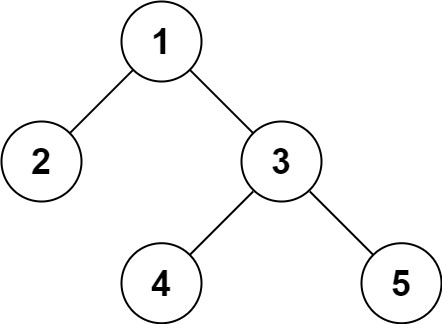题目¶
原题地址:https://leetcode.com/problems/serialize-and-deserialize-binary-tree/
Serialization is the process of converting a data structure or object into a sequence of bits so that it can be stored in a file or memory buffer, or transmitted across a network connection link to be reconstructed later in the same or another computer environment.
Design an algorithm to serialize and deserialize a binary tree. There is no restriction on how your serialization/deserialization algorithm should work. You just need to ensure that a binary tree can be serialized to a string and this string can be deserialized to the original tree structure.
Clarification: The input/output format is the same as how LeetCode serializes a binary tree . You do not necessarily need to follow this format, so please be creative and come up with different approaches yourself.
Example 1:

Input: root = [1,2,3,null,null,4,5] Output: [1,2,3,null,null,4,5]
Example 2:
Input: root = [] Output: []
Example 3:
Input: root = [1] Output: [1]
Example 4:
Input: root = [1,2] Output: [1,2]
Constraints:
- The number of nodes in the tree is in the range [0, 10^4].
- -1000 <= Node.val <= 1000
题目大意是,设计一个类实现序列化和反序列化一个二叉树的功能
解法¶
序列化,中序遍历将节点的值用空格分隔组成一个字符串,通过使用 N 标识空节点:
- [1,null,2] 将序列化为 1 N 2 N N
- [2,1,3] 将序列化为 2 1 N N 3 N N
- [5,3,6,2,4,null,7] 将序列化为 5 3 2 N N 4 N N 6 N 7 N N
反序列化,按空格读取字符串中包含的所有节点的值,然后基于读取处理的值列表重建二叉树: * 按照中序遍历的过程来重建二叉树 * 如果当前值是 N 说明是空节点 * 否则就是普通节点
这个思路的 Python 代码类似下面这样:
# Definition for a binary tree node.
# class TreeNode(object):
# def __init__(self, x):
# self.val = x
# self.left = None
# self.right = None
class Codec:
def serialize(self, root):
"""Encodes a tree to a single string."""
if root is None:
return 'N'
val = '{}'.format(root.val)
left = self.serialize(root.left)
right = self.serialize(root.right)
return '{} {} {}'.format(val, left, right)
def deserialize(self, data):
"""Decodes your encoded data to tree."""
values = data.split()
root = self._build_tree(values)
return root
def _build_tree(self, values):
if not values:
return None
next_value = values.pop(0)
if next_value == 'N':
return None
val = int(next_value)
root = TreeNode(val)
root.left = self._build_tree(values)
root.right = self._build_tree(values)
return root
# Your Codec object will be instantiated and called as such:
# ser = Codec()
# deser = Codec()
# ans = deser.deserialize(ser.serialize(root))
Comments